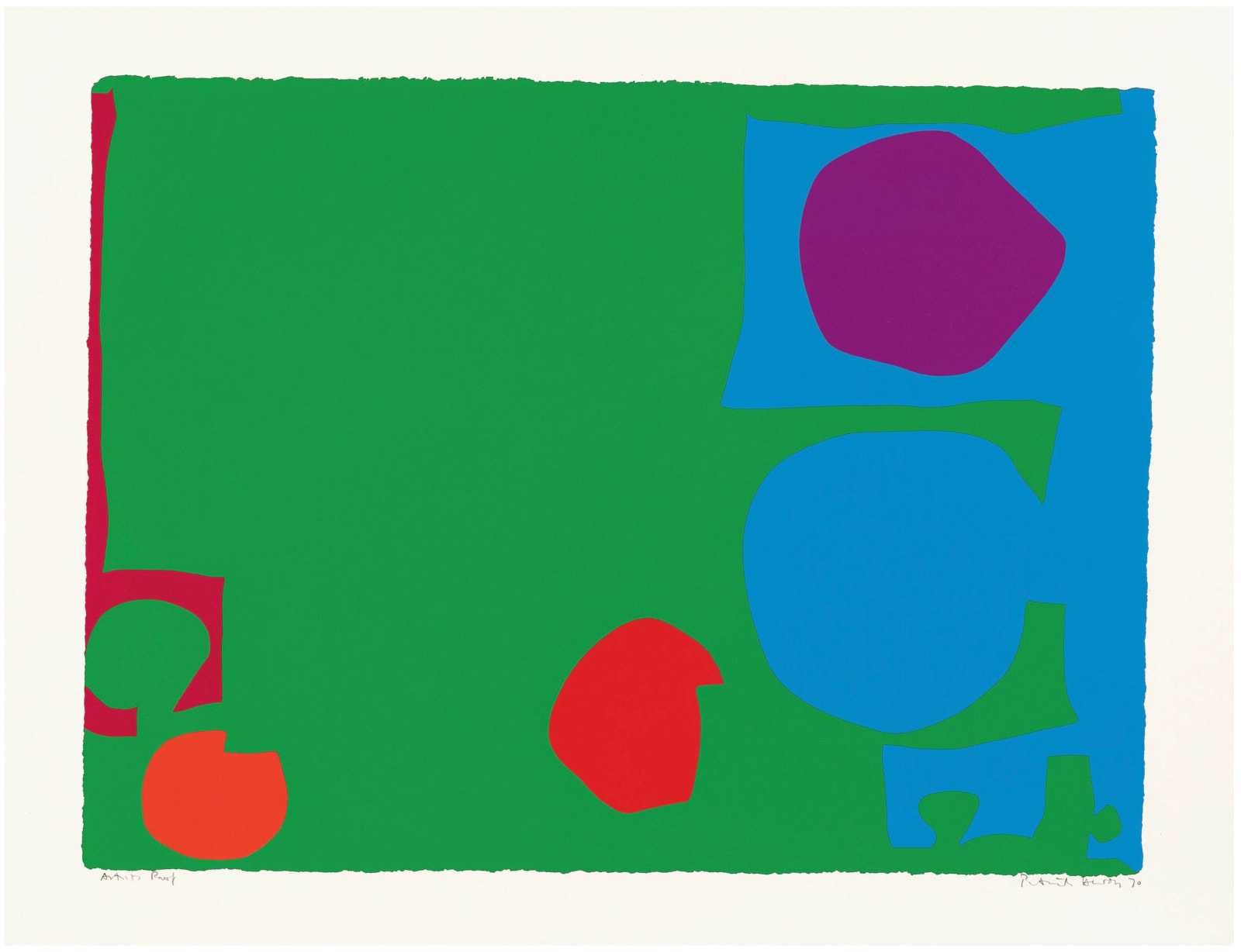Patrick Heron U.K., 1920-1999
Three Reds in Green and Magenta in Blue : April 1970, 1970
Screenprint on smooth wove paper, framed
Signed by the artist in pencil, lower right on recto
Signed by the artist in pencil, lower right on recto
70.4 x 101.4 cm
© The Estate of Patrick Heron
Patrick Heron's 'Three Reds in Green and Magenta in Blue: April 1970' is a quintessential example of the artist's work from a period that marked the pinnacle of his exploration...
Patrick Heron's 'Three Reds in Green and Magenta in Blue: April 1970' is a quintessential example of the artist's work from a period that marked the pinnacle of his exploration of abstraction and colour theory. This large-scale composition exemplifies Heron's commitment to the "wobbly hard-edge" technique, where seemingly solid fields of vibrant colour are revealed, upon closer inspection, to have subtly textured surfaces and organic, imperfect boundaries.
The artwork features expansive areas of intense red, green, magenta, and blue juxtaposed to create visual tension and energy. Heron's use of a small brush to apply paint throughout the composition results in a delicate impasto effect, adding depth and interest to the seemingly flat colour fields. The interplay between these hues demonstrates Heron's belief that "Colour is both the subject and the means, the form and the content, the image and the meaning" in his artwork.
This work is significant within Heron's oeuvre as it represents his mature abstract style, developed after his move to Zennor, Cornwall, and his association with the St. Ives School. It showcases his progression from earlier figurative work influenced by artists like Braque and Matisse to a uniquely British response to American Abstract Expressionism.
In the context of art history, 'Three Reds in Green and Magenta in Blue: April 1970' stands as a testament to Heron's role in advancing abstraction in British art and his contributions to colour theory. It reflects the artist's exploration of the "alloverness" concept, where every part of the composition holds equal importance. This approach challenged traditional notions of composition and helped establish abstract artwork as a major force in British art during the post-war period.
The artwork features expansive areas of intense red, green, magenta, and blue juxtaposed to create visual tension and energy. Heron's use of a small brush to apply paint throughout the composition results in a delicate impasto effect, adding depth and interest to the seemingly flat colour fields. The interplay between these hues demonstrates Heron's belief that "Colour is both the subject and the means, the form and the content, the image and the meaning" in his artwork.
This work is significant within Heron's oeuvre as it represents his mature abstract style, developed after his move to Zennor, Cornwall, and his association with the St. Ives School. It showcases his progression from earlier figurative work influenced by artists like Braque and Matisse to a uniquely British response to American Abstract Expressionism.
In the context of art history, 'Three Reds in Green and Magenta in Blue: April 1970' stands as a testament to Heron's role in advancing abstraction in British art and his contributions to colour theory. It reflects the artist's exploration of the "alloverness" concept, where every part of the composition holds equal importance. This approach challenged traditional notions of composition and helped establish abstract artwork as a major force in British art during the post-war period.
7
of
7
